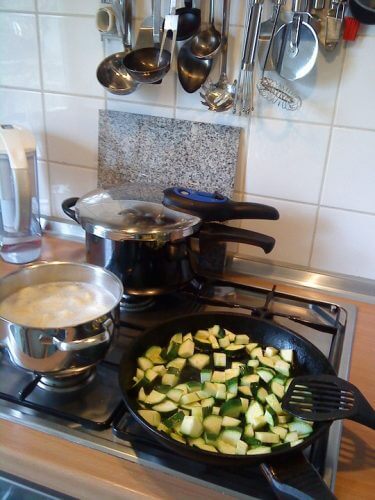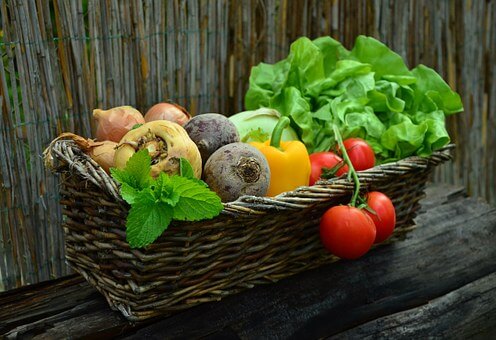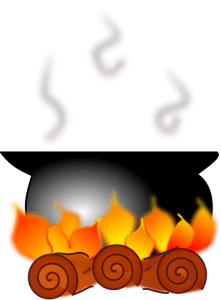So, you’ve finally decided to learn how to cook using a pressure cooker. All you need to do is make friends with your cooker and the rest is easy. It means you need to understand how your pressure cooker works. If you haven’t yet purchased one, our pressure cooker reviews will be more than helpful to help you make a good decision for your kitchen.

This post will explain the way pressure cookers should be handled. You will learn many cooking methods you can try with your pressure cooker. Moreover, it will also take you through the basic information required for cooking different kinds of food.
So, let’s get started!
Pressure Cooker Basics
Before moving on, make sure that you read and follow the manufacturer’s manual all the way down to the last detail. Following the information will help you understand technical terms and processes, in an easy way.
- When Pressure is Attained
The reason why the manufacturer’s manual is important is that every pressure cooker has its own unique way of indicating when the pressure is attained. The manual will help you understand how it works. You may find any of the following indications when your pressure cooker reaches the desired pressure level:
- Most 2nd generation pressure cookers have a spring valve. As soon as the pressure is reached, it indicates visually, or sometimes by making noise. It does so by raising a bar, signal or rod.
- Pressure cookers with valves indicate maximum internal pressure through jiggling or rocking. The valve starts to jiggle slowly, then eventually it jiggles quite vivaciously, while the steam starts to escape.
- You can hear the beep, followed by “P” indicator, or the blinking may stop. You don’t need to do anything since they have a default counting down time.
- If your pressure cooker has a weight-modified valve, it will either make a whistle or a hissing sound to inform you about the pressure reached, while making way for the steam to evaporate.
- How to Release Pressure off the Cooker
It depends on the recipe that tells you the manner in which to release the pressure. All in all, there are three ways in which you can release the pressure:
Source: Hip Pressure Cooking
- Natural release method: This method is suitable for grains, meats, and legumes. All you need is to cut off external heat and allow the internal pressure to settle down naturally. It normally takes close to 15 minutes.
- Manual Method: you can release the pressure manually, by pouring cold water onto the lid. You can try this method on vegetables
- Automatic Release: this method is also known as “Quick Release” in which the steam escapes from the pressure cooker via pressure release valves. If you’re cooking meat or fish, this particular technique is the best.
- The Cleaning
A pressure cooker isn’t an ordinary saucepan or bowl that requires simple cleaning. It contains many valves that may be blocked by the food particles or vapors. So, make sure it’s been thoroughly cleaned before reuse. In general, the following items require proper washing and/or cleaning:
- The gasket
- The pot
- The lid
- The valve (for clearing blockage)
What Type of Food Should You Cook in a Pressure Cooker?
You can cook any kind of food in your pressure cooker, but the following are some ideal foods that will give you the best taste and nutrients if cooked in a pressure cooker:
- Poultry & Meat
You can brown the meat and poultry before cooking them in your pressure cooker. The method is described below in the next section. While releasing pressure off the cooker, follow the natural release method to prevent toughening.
- Beans
Pressure cooker beans are very popular because they take 15 to 30 minutes to cook; otherwise, they would take 2 hours or more with the conventional method.
- For pre-soaked beans, the cooking time is 10 – 15 minutes
- For unsoaked beans, the cooking time is up to 25 minutes
- Fish
Steaming is the ideal way to prepare fish in a pressure cooker. The process is discussed below. You can opt for a quick release method for releasing the pressure of fish foods or other seafood.
- Vegetables
You can cook vegetables in a pressure cooker using the steaming method. While releasing pressure, follow the quick release method.

If you’re wondering what else you can cook in a pressure cooker, here are some popular foods that are ideal for pressure cooking:
- Root crops (carrots and potatoes)
- Rice
- Corn
- Whole grains
- Desserts with crusts
Foods You Should Avoid in Pressure Cooker
- Macaroni, Oatmeal, and Cereal
The Time Factor
Time is the most important factor while cooking anything using a pressure cooker. Here are the cooking times for most common foods cooked in a pressure cooker. You can see more at:
- https://fastcooking.ca/pressure_cookers/cooking_times_pressure_cooker.php
- http://www.hippressurecooking.com/pressure-cooking-times/
7 Cooking Methods for Pressure Cookers
Source: WMF (dot) com
Unlike ordinary pots and pans, you can try a lot of different methods with your pressure cooker. The most common methods are discussed below:
#1. Boiling
 If you think boiling is the only way to cook in a pressure cooker, that is incorrect. In fact, boiling helps tenderize hard meat and removes bacteria from veggies. It produces broth in boiled meat which you can use as a soup or as an addition in gravy.
If you think boiling is the only way to cook in a pressure cooker, that is incorrect. In fact, boiling helps tenderize hard meat and removes bacteria from veggies. It produces broth in boiled meat which you can use as a soup or as an addition in gravy.
#2. Stewing
This method is suitable for stewing meats, vegetables, fruits, and seafood. You can stew the food with the lid open, then cover the food with any suitable liquid.
#3. Braising
This technique is similar to stewing. It is used to brown the meat and get thick, delicious gravy.
#4. Steaming
This method is perhaps the easiest and healthiest way of cooking. You need to pour water in the pot. Then place the trivet on it, followed by the basket filled with food on top. With this method, you not only preserve the most nutrients, but you also retain the flavor and color of the food.
#5. Steam roasting
With this method, you can cook large meat cuts, even a whole chicken. Pour the water, then place the food on an elevated rack which should be well above the water level.
#6. Poaching
This cooking method is suitable for food that falls apart easily, like poultry, egg, fish and more. In poaching, the items are submerged in milk, wine, water or stock.
#7. Baking
If your kids love cheesecakes, fruitcakes, custards or other desserts that require a mold, you can bake them using your pressure cooker.
Can you can quarts in the pressure. The manual only gives time for pints.
Sure you can… your pressure cooker simply needs to be large enough.
Thanks for sharing some useful tips. Everyone who uses a pressure cooker must read this article.